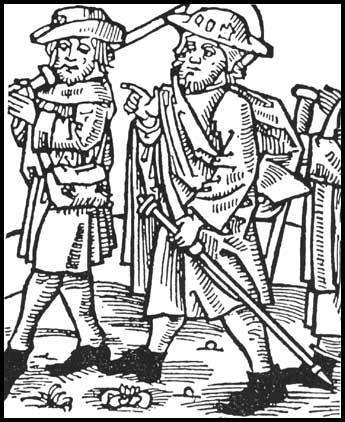 I'm going to run some 5e games at the local library. I don't want to use pre-gens, but there isn't time for a full chargen session. So I'm going to try this very quick piece of life-path generation.
I'm going to run some 5e games at the local library. I don't want to use pre-gens, but there isn't time for a full chargen session. So I'm going to try this very quick piece of life-path generation.A few assumptions: The PCs are all from the same village, are about the same age, and grew up together. Character creation options have been limited to make the process more fleet and new-player ready.
First, we all agree on the name of the village. Then, as a group, we go through the following steps, one at a time.
1. Background
Who raised you? What did trade they teach you? Did you like or hate this trade?
Roll 1d30
|
1-10
|
Acolyte
|
28-29
|
Mason (Guild Artisan)
|
61-65
|
Hermit
|
|
11-12
|
Brewer (Guild Artisan)
|
30-31
|
Painter (Guild Artisan)
|
66-70
|
Merchant
|
|
13-14
|
Calligrapher (Guild
Artisan)
|
32-33
|
Potter (Guild Artisan)
|
71-75
|
Noble
|
|
15-16
|
Carpenter (Guild Artisan)
|
34-35
|
Smith (Guild Artisan)
|
76
|
Exile (Outlander)
|
|
17-18
|
Cartographer (Guild
Artisan)
|
36-37
|
Weaver (Guild Artisan)
|
77-78
|
Forester (Outlander)
|
|
19-20
|
Cobbler (Guild Artisan)
|
38-39
|
Woodcarver (Guild Artisan)
|
79-80
|
Hunter (Outlander)
|
|
21-22
|
Cook (Guild Artisan)
|
40-44
|
Charlatan
|
81-82
|
Trapper (Outlander)
|
|
23-24
|
Glassblower (Guild Artisan)
|
45-50
|
Criminal
|
83-89
|
Sage
|
|
25-26
|
Jeweler (Guild Artisan)
|
51-55
|
Entertainer
|
90-95
|
Sailor
|
|
27-28
|
Leatherworker (Guild Artisan)
|
56-60
|
Folk Hero
|
96-00
|
Urchin
|
What kind of adventurer did you dream of being?
Bard, Cleric, Fighter, Ranger, Rogue, Wizard
Cleric: Which gods speak to you?
Knowledge, Life, Light, Nature, Tempest, Trickery
Fighter: Do you rely on strength or finesse? (STR-based or DEX-based)
3. Race (Optional)
Most people in the village are human, but you can either choose to be one of the races listed below...
Dwarf (Mountain), Elf (Wood), Halfling (Lightfoot)
...or roll 1d6 for something stranger.
- Bugbear
- Genasi (1. Air, 2. Water, 3. Earth, 4. Fire)
- Goblin
- Goliath
- Kenku
- Lizardfolk
Why did you leave your people? How did you come to live among these humans?
4. Alignment
Law/Chaos: Which is more important, duty or instinct?
Good/Neutral: Do you actively help others, or live and let live?
5. Name
Make up a name, or pick from this handy list.
6. Sheet
Enter the relevant data into Fast Character or a similar generator and print out the sheet.
NOTES
I feel like the simple process of thinking through these few steps of your character should create a lot more investment than just handing out a pre-gen. Fast Character generates stats and equipment lists, and so on. All things you'd want to fine-tune for a real bespoke character, but it in a quick pick-up situation, this is ideal.
This owes a lot to Beyond the Wall by Flatland Games. Such a good game, with so many great ideas.
There are some hiccups. Namely, the background table lists specific artisan backgrounds, and the generator will assign you one randomly. But I felt the flavor of imagining being raised by, say, cobblers, was so much richer than "a guild artisan," that I figured it was worth spending a moment crossing out a a few details on the resultant sheet.
And the generator necessitates sticking with official materials. I have a similar process I've used at the home table, where I have some homebrew backgrounds (simple, rustic ones, like "farmer" and "shepherd"), races, and so on.
This is great! I might use it for my own kids' D&D library group. Out of curiosity, what adventure are you planning on running?
ReplyDeleteThe library gave me a PWYW adventure from DM's Guild called "A Most Potent Brew." It's a standard rats-in-the-basement adventure. I've made a number of adaptations to it, which I'll post after I've run it.
DeleteThat right there ↑ is spam :)
ReplyDeleteYou'll have to give an after-play report, particularly how the quick chargen went!
I this awesome. I love visiting dndwiki every time to find overviews and details about any class or spells or races.
ReplyDelete